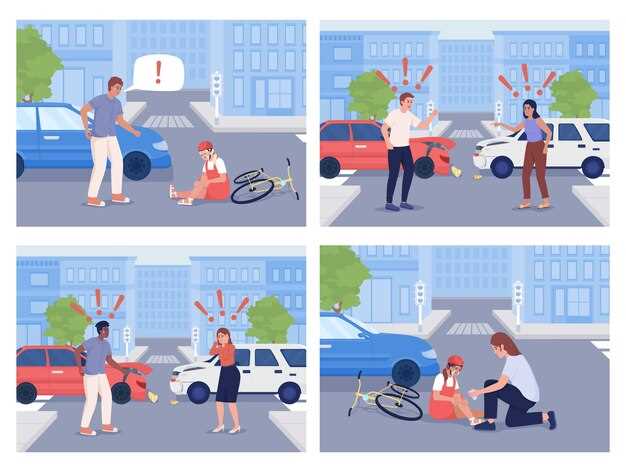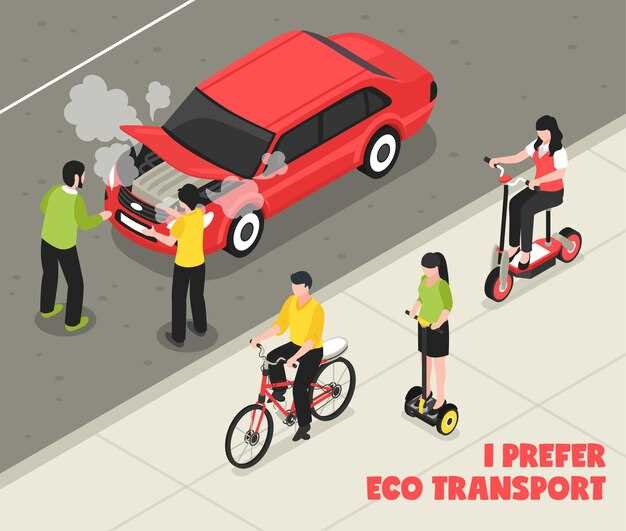
How to Handle Emergency Situations While Riding

In the world of cycling, the potential for an accident looms over every ride. Whether it involves unpredictable traffic, sudden changes in weather, or the presence of obstacles on the road, cyclists must be prepared to react swiftly and effectively. Understanding how to manage emergencies is crucial to ensuring safety and minimizing the likelihood of incidents that can lead to serious injuries or damages.
The key to prevention lies in proactive measures and comprehensive knowledge of riding techniques. One of the most important aspects of emergency preparedness is mastering effective braking techniques. Cyclists should be trained to recognize when to apply the brakes gently to maintain control and when to use more forceful braking to stop quickly in critical situations. This skill not only helps prevent collisions but also instills confidence when navigating through unforeseen challenges.
By focusing on both proactive safety strategies and reactive skills, cyclists can significantly reduce their risk of encountering accidents. Continuous education and practice in emergency response, combined with a commitment to maintaining bike integrity, equip riders to handle whatever the road throws their way. In this article, we will explore essential strategies for managing emergencies, emphasizing the vital role of effective braking and accident prevention.
Mastering Techniques for Emergency Braking

Emergency braking is a critical skill for any rider, as it can mean the difference between avoiding an accident and facing a serious collision. Understanding how to brake effectively in high-pressure situations is essential for both your safety and the safety of others on the road.
To execute proper emergency braking, begin by recognizing the signs that require immediate action, such as an obstruction in your path or a vehicle abruptly stopping ahead. Stay calm and focus on your braking technique, as panicking can lead to mistakes.
One effective method is the progressive braking technique. This involves gradually applying both front and rear brakes. The front brake should be engaged first, applying about 70% of your braking force, as this shifts weight forward and increases tire grip. Simultaneously, engage the rear brake lightly to prevent the rear wheel from lifting, which can result in loss of control.
Another important aspect is your body positioning. Shift your weight slightly forward while braking to maximize stability. This adjustment helps maintain traction and allows for better handling of your vehicle during the emergency stop.
In situations where skidding occurs, it is crucial to avoid grabbing the brakes forcefully. Instead, release the brakes momentarily to regain traction before reapplying them smoothly. This technique helps you recover control and reduces the chances of an accident.
Lastly, regular practice of emergency braking techniques in a safe environment can significantly enhance your response in real-life situations. Create drills that simulate various scenarios to build confidence and competence, ensuring you are prepared for any unexpected challenges on the road.
Identifying Common Accident Triggers and How to Avoid Them
Understanding the common triggers that can lead to accidents while riding is crucial for effective emergency management. By being aware of these risks, riders can implement prevention strategies that significantly reduce the likelihood of accidents.
One of the most frequent triggers is sudden braking. This can occur due to unexpected obstacles, such as debris on the road or sudden stops by other vehicles. To minimize this risk, maintain a safe following distance from the vehicle in front and always be alert to your surroundings. Practice smooth and gradual braking to increase control when emergencies arise.
Another common cause of accidents is poor weather conditions. Rain, fog, or snow can drastically affect visibility and traction. Riders should adapt their speed and riding style to suit the weather. Before heading out, check weather reports and avoid riding in severe conditions whenever possible.
Distracted riding, whether from mobile devices or engaging in conversation with passengers, greatly heightens the risk of accidents. Focus solely on the ride to make quick decisions and react appropriately to sudden changes on the road. Consider establishing rules for non-distracted riding with fellow passengers.
Lastly, mechanical failures can lead to critical situations. Regularly inspect your vehicle to ensure brakes, tires, and lights are functioning properly. Address any maintenance issues promptly to reduce the chance of mechanical emergencies.
By recognizing these common triggers and implementing proactive prevention measures, riders can enhance their safety and improve their ability to manage emergencies effectively, ultimately reducing the risk of accidents.
Assessing Your Environment for Safer Riding Decisions

To ensure accident prevention while riding, it is essential to assess your environment effectively. This assessment involves being aware of the surroundings and recognizing potential hazards that could lead to emergencies. Safe riding is not just about mastering your vehicle; it also requires a keen understanding of the conditions you encounter.
Start by evaluating the road conditions. Look for potholes, debris, or loose gravel that could compromise your stability. Weather plays a critical role as well; rain, fog, or strong winds can drastically alter visibility and traction. Adjust your riding style accordingly to accommodate these changes. Slow down when necessary, and maintain a safe distance from other vehicles to give yourself ample time to react to unexpected situations.
Additionally, be vigilant about traffic patterns and behaviors. Anticipate sudden stops by other vehicles or pedestrians making impulsive decisions. Understanding the flow of traffic and recognizing potential distractions can significantly decrease the likelihood of an accident. Use your mirrors and check blind spots frequently to stay aware of your surroundings.
Finally, consider the time of day and its impact on visibility and road usage. Riding at dusk or dawn may require extra caution due to reduced light conditions. Higher traffic volumes during peak hours increase the risk of emergencies, making situational awareness paramount.
In summary, assessing your environment is a continuous process that informs riding decisions. By focusing on accident prevention and remaining prepared for potential emergencies, you can enhance your safety and the safety of others on the road.